First 844, Last 844

Here we look at some good ideas that got caught up in the financial upheavals of International Harvester and see an unlikely survivor.
The 844, and its little brother the 434, are two of those Scout marketing ideas that fall under the heading of, "best laid plans of mice and men." The two new models were conceived in the summer of 1979 as a way to offer the most fuel efficient versions of the Scout in snazzy, affordable packages. The program was doomed from the start.
As the 1980s loomed, two of Internationals largest technical challenges had become major priorities; emissions and fuel economy. We won't deal with the emissions aspect but Corporate Average Fuel Economy (CAFE), enacted by Congress in 1975 after the Arab Oil Embargo, had begun for passenger cars in 1978 and kicked in for light trucks in 1979. By 1980, the EPA rated average of all four-wheel drive light trucks and SUV products at International had to be 14 mpg. The 4x2s had to make 16 mpg. Since all that was left were Scouts, that was attainable. Up ahead, the numbers continued upward, with 1982 was 18 for the 4x2s and 16 for the 4x4s. The manufacturer could choose between the individual standards or choose a combined standard, which was 17.5 that year.
International was holding it's own in terms of EPA ratings for the Scout. In 1979, EPA tests of the upcoming models had delivered solid averages for the Scout IIs, 16 mpg combined for the four cylinders and 13 for the 304 and 345... all using the 4-speed close ratio box or the 3-speed. Backed up by the diesels, which were in the 20 and 22 mpg range, International had no immediate worries but engine and vehicle changes were in the offing for the future. But again, that's a topic for another discussion.
After evaluating their EPA numbers, International decided they could offer low cost versions of the 4x4 gasoline powered Scouts in two configurations. The four-cylinder with a three-speed or the close ratio four-speed delivered the same EPA combined rating, 16 mpg. The three-speed allowed a lower cost, so that was one candidate.
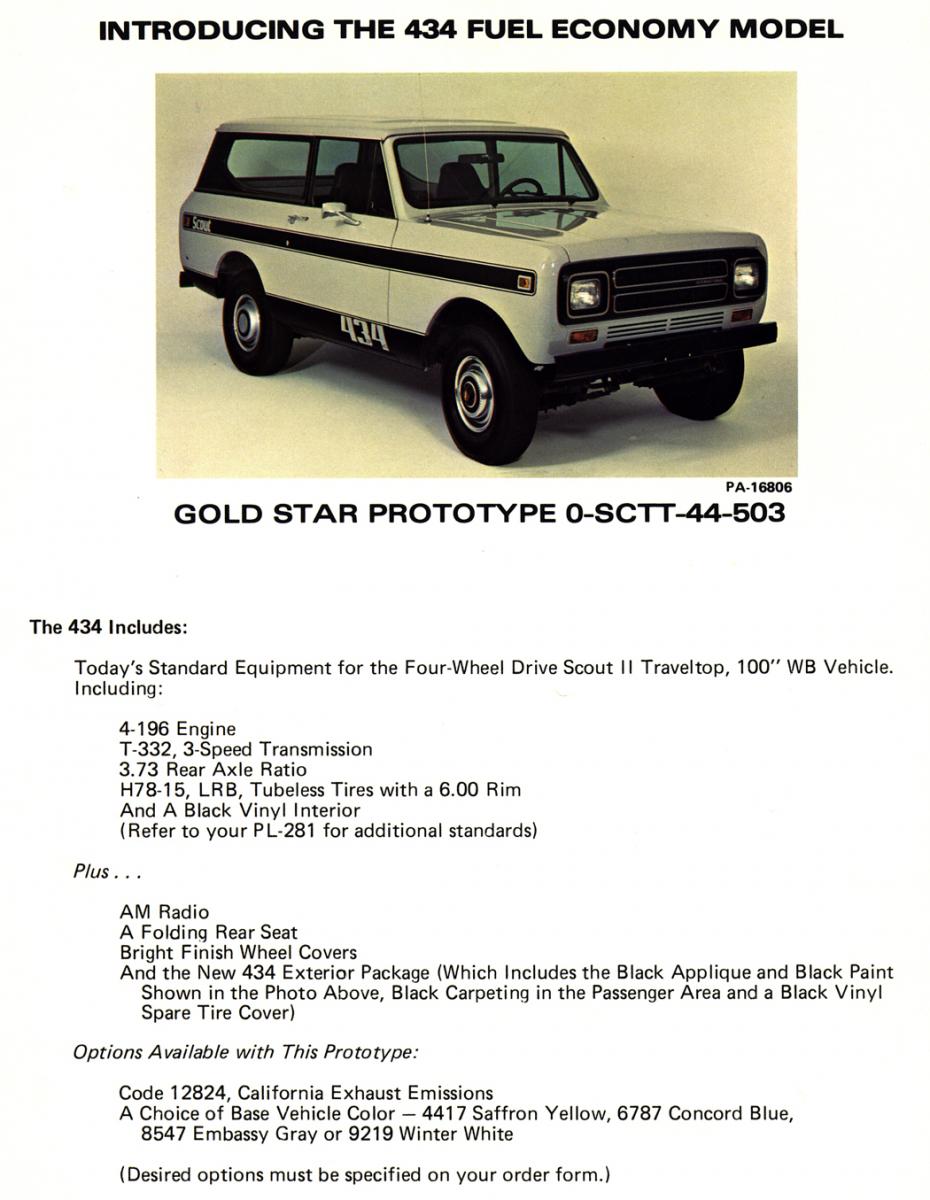
Even in the face of high fuel costs, there are some who won't settle for less than a V8. So be it! It was discovered the 304 and 345 delivered virtually the same economy in the combined EPA tests, 13 or 14 mpg, regardless of transmission, so why not go with the torquey 345 behind the close-ratio T428 four-speed and 2.72:1 axle ratios? Yeah, in theory the smaller engine used less fuel but it worked harder, which took some of that advantage back. Plus, the 304 couldn't pull those ultra-tall gears well. There was other reasoning in play that nixed the 304. It was on the chopping block for a good number of practical reasons and it was scheduled to be dropped after 1980.
Once they had two good platforms, it was time to outfit and doll them up. The base package included a standard exterior with some enhancements we will talk about in a minute. The interior was a mix of features of the Deluxe and the Custom. The interior was basically the Deluxe black but a rear seat was included standard and front carpets were included, as was an AM radio. Choices of exterior colors included Saffron Yellow (4417), Concord Blue (6787), Embassy Gray (8547) or Winter White (9219).
To jazz them up, the International marketing folks came up with some catchy designations. The four-cylinder model would be called the 434 (4-Cylinder, 3-speed, 4-wheel drive) and the V8 would be called the 844 (8-cylinder, 4-speed, 4-wheel drive). CVI (Custom Vehicles Incorporated) designed some graphics and a set of wheel covers were chosen to finish it off. These wheel covers had been seen earlier in some special low cost SSIIs from 1979. The graphics were black and with the standard exterior black grille and black bumpers, plus the top sides being painted black, it was a pretty sharp Scout if you weren't a big fan of chrome.
The specials were given Gold Star codes for fast ordering by dealers, the 434 having the number 0-SCTT-44-503 and the 844 being 0-SCTT-44-502. It was announced to dealers on March 21, 1980 in News Bulletin G-878 with instructions on how to order. On the LST, first movement was to CVI, who installed the graphics and did the paint work, and from thre it would be shipped to the dealer. The only options were California exhaust emission when required and the modulated fan to meet noise regulations where required.
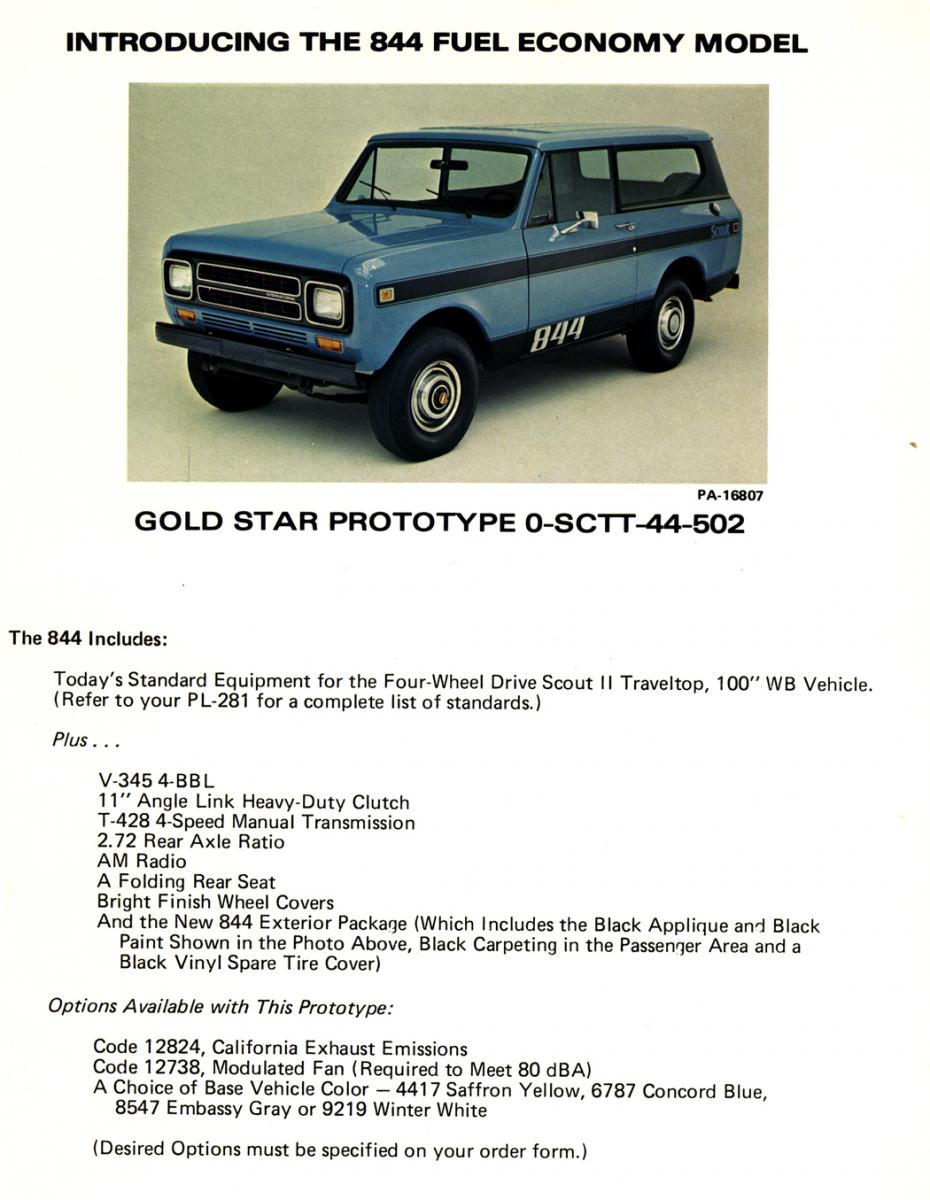
If you aren't screaming at the screen "but what about the strike?" you haven't read International Scout Encyclopedia yet. The strike began November 1 of 1979 and didn't end until April 21, 1980. Sales must have seen some light at the end of the tunnel when they decided to put out the March 21 bulletin. Production restarted on April 24 but on May 15, it was learned the Scout Division was going up for sale. There was some hope of a buyer, a hope that gradually faded and eventually, management issued a shut-down date. Scout production ended on October 21, 1980 and the factory was shuttered. On June 4, in the midst of the turmoil, the 434/844 program was cancelled. How many were built between April 24 and June 4? None that we can find. We looked for the special 16830 package code on build sheets from early April to early June and didn't find a one. It's possible to miss a number when scrolling through thousands of build sheets on microfilm but if there was more than a handful built, we would be surprised. We don't have all the Gold Star book revisions from 1980 either, but the ones we have don't show the 434/844 codes.
We do know of three that were built, the two from the sales documentation and one found hiding with a group of semi-derelict IH vehicles in a location we will not disclose. This rig was an early production 1980 built in October of 1979 as a "Goods Loaned" vehicle and most likely was pulled off the line to go to CVI for the development of the graphics. From there it would have been evaluated by sales staff, tweaked as needed and approved. It's the only known surviving 844 but , as you can see, it's just barely in the surviving category.
So, yeah, what might have been a popular special model for 1980 was killed by a strike, corporate misfortune and a production shutdown.
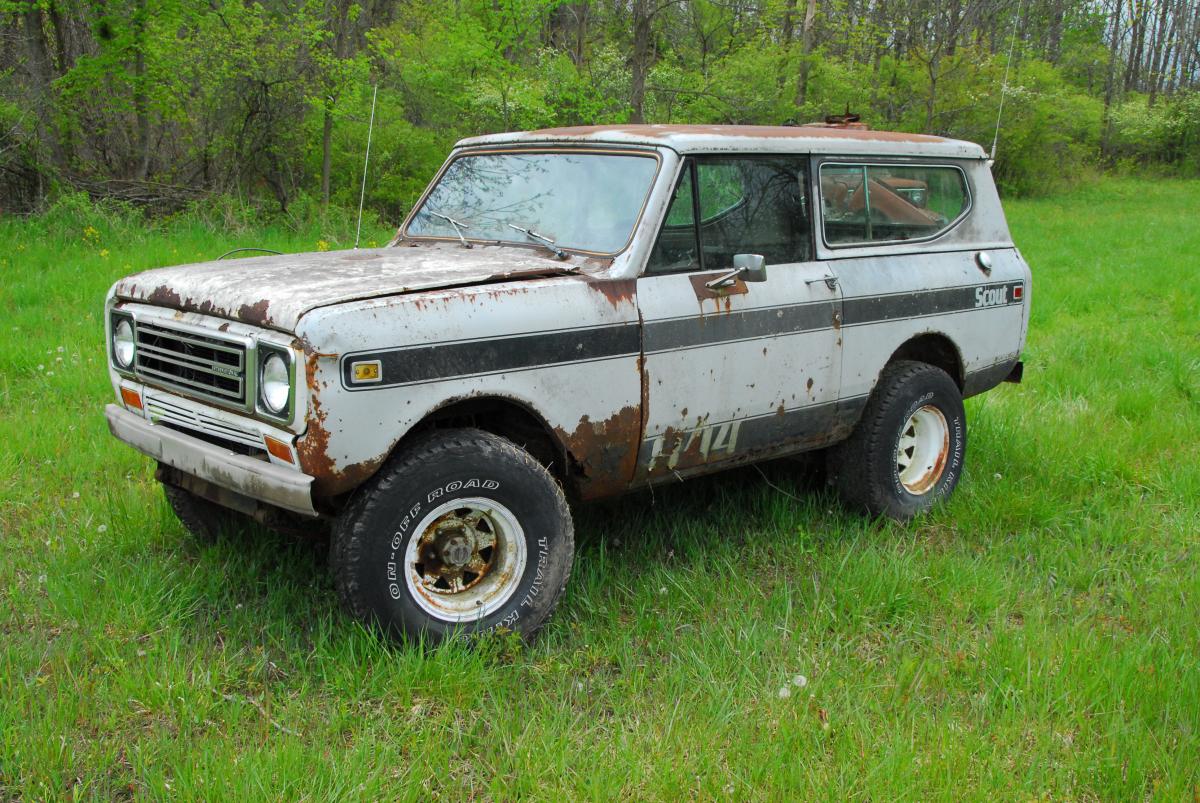
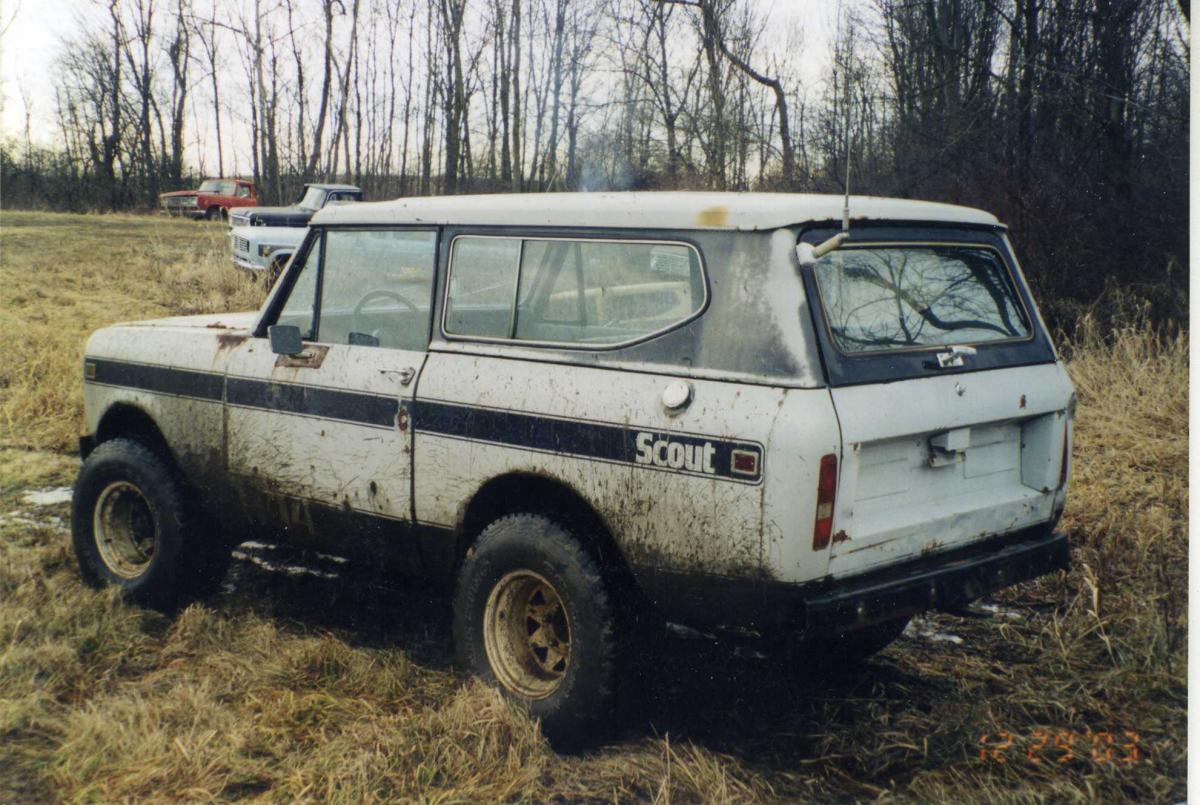
Most likely this was the first 844 and now it's the last 844. It one of only two known to have been produced. It started life and a rather well equipped 1980 Embassy Gray (8547) 1980 Scout II (yes, we know it has a '79 grille that was added later) with a 345 and the close ratio 4-speed. The axle ratio was a super-tall 2.72:1 and so equipped it was EPA rated for 13.5 mpg city and 21 mpg highway. The interior was originally in Custom trim with buckets and a console, along with sliding rear windows. It bears the marks of the CVI appliqué and the cab sides were once painted a satin black. It rolled of the line with Polycast wheels mounting Goodyear Tienpo radials, but we presume the steel wheels, special hubcaps and budget street tires were added during the conversion. No doubt this rig was built to test the concept.
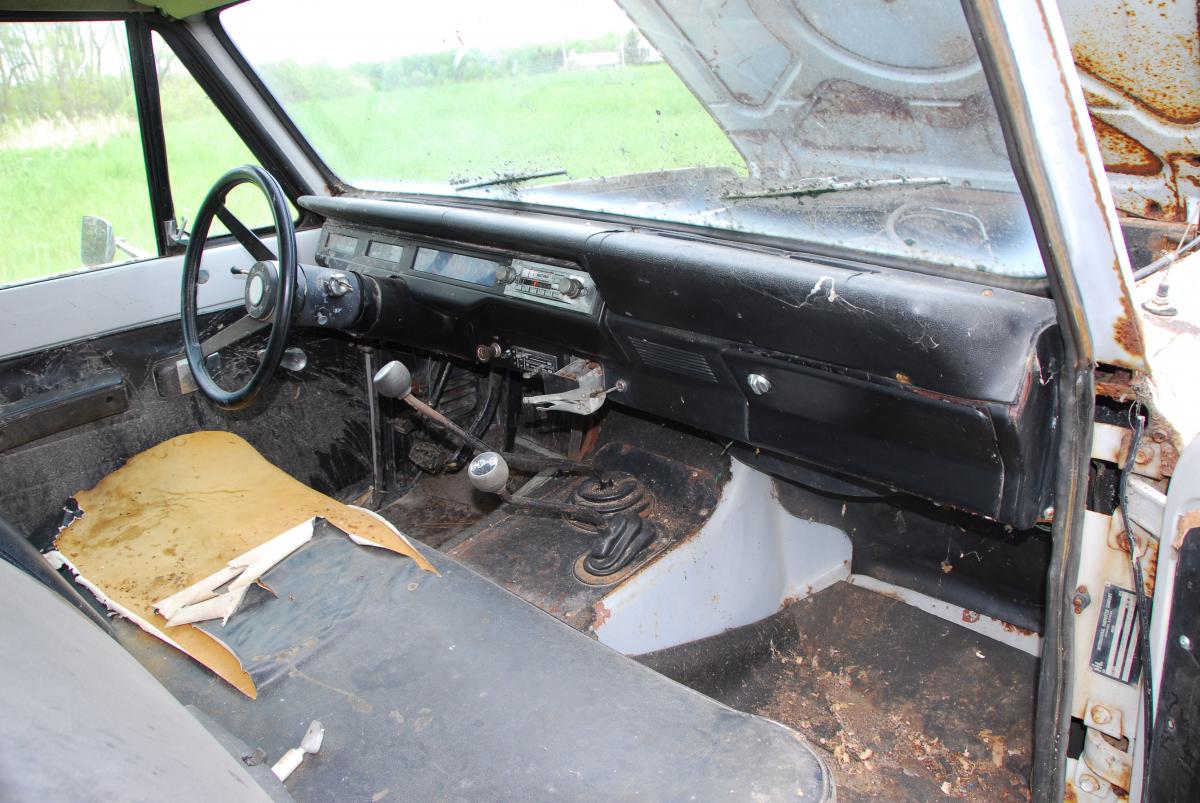
The interior is trashed by time, weather and critters but when built, this Scout rolled off the line with the Custom trim level interior, bucket seats, a storage box and carpets. We know this level of trim was not intended for a low cost model, so the lower level interior was installed for the evaluation. It isn't 100 percent clear whether bench of bucket seats were intended but the low-cost mandate make a bench seat pretty certain.

